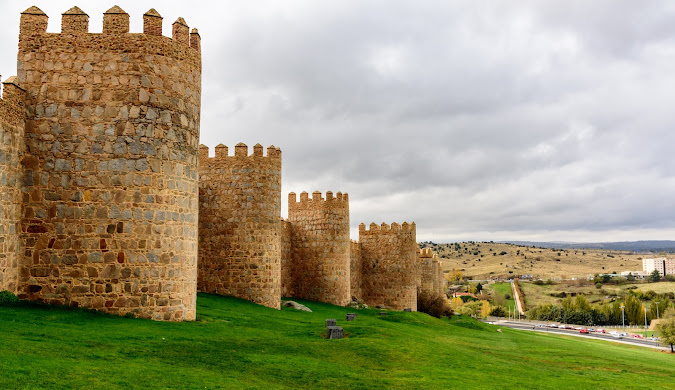Avila , Spain
🏰 Ávila – The Walled City of Castile
📍 Where is it?
Located in the region of Castile and León, about 1.5 hours from Madrid by car or train.
🌟 Why Visit Ávila?
Ávila is most famous for its perfectly preserved medieval walls and deep religious significance. It’s a city that feels like stepping back in time, ideal for history lovers and those seeking a peaceful, authentic Spanish experience.
🧱 Top Highlights
🔸 Muralla de Ávila (City Walls)
-
Nearly 2.5 km of fortified walls with 87 towers and 9 gates.
-
You can walk along parts of the wall for amazing city views.
🔸 Catedral de Ávila
-
Spain’s first Gothic cathedral, integrated into the city wall.
-
Impressive architecture and artworks inside.
🔸 Convent of Saint Teresa
-
Dedicated to Saint Teresa of Ávila, a major Catholic figure born here.
-
Important pilgrimage site and beautiful religious monument.
🔸 Basilica de San Vicente
-
Romanesque church built on the site where Saint Vincent was martyred.
-
Rich in carvings and history.
🔸 Plaza del Mercado Chico
-
Main square, great for coffee, tapas, and soaking up the slow pace of local life.
🥘 Local Food to Try
-
Chuletón de Ávila – Big, juicy T-bone steak from local beef.
-
Yemas de Santa Teresa – Sweet egg yolk pastries, a local treat.
-
Judías del Barco – Hearty white bean stew from the region.
🛏️ Best For
-
History buffs
-
Spiritual/pilgrimage travelers
-
Peaceful weekend getaways
-
Day trips from Madrid
-
✨ More Fascinating Facts & Curiosities About Ávila
🧱 1. The Walls Have Secrets
-
The Muralla de Ávila isn’t just for defense—it also had houses, shops, and even small chapels inside!
-
You can actually walk a large part of the wall (about 1.7 km), and from the top, you’ll get panoramic views of the entire old town and surrounding plains.
✝️ 2. Spiritual Capital of Spain
-
Ávila is considered one of the most spiritual cities in Spain.
-
It's the birthplace of Saint Teresa of Ávila, a mystic, writer, and reformer of the Carmelite Order, and her legacy is felt everywhere—statues, convents, and even relics like her ring and walking cane.
🎭 3. It Hosts a Unique Medieval Festival
-
Every September, Ávila transforms into a medieval world with the "Jornadas Medievales".
-
The whole old city dresses in period costumes, with knights, jesters, markets, and performances. It's like time travel!
🥶 4. The Coldest City in Spain?
-
Ávila is one of the coldest provincial capitals in Spain, due to its elevation (over 1,100 meters above sea level).
-
In winter, it's not unusual to see the city blanketed in snow—making the walls look even more magical.
🪄 5. UNESCO World Heritage Site
-
The entire old town of Ávila, including its famous walls, churches, and historical buildings, was declared a UNESCO World Heritage Site in 1985.
🔍 6. Stones with a Story
-
The walls were built in the 11th century, but many stones used to build them came from ancient Roman ruins, reused by the medieval builders.
-
If you look closely at some stones, you can still spot Roman inscriptions or carvings.
📜 7. Mini Jerusalem?
-
Because of its religious heritage and impressive churches, some people call Ávila "La Jerusalén de Castilla" ("Jerusalem of Castile").
📷 8. Best Photo Spot?
-
Head to "Los Cuatro Postes", a scenic overlook just outside the city with an epic view of Ávila’s walls, especially stunning at sunset or when lit up at night.
🍷 9. Wine & Gastronomy Hub
-
The nearby Ribera del Duero and Rueda wine regions are not far—so Ávila is also a great base for wine lovers.
-
The region has a strong slow food tradition—rich stews, cured meats, and hearty Castilian cuisine
-


